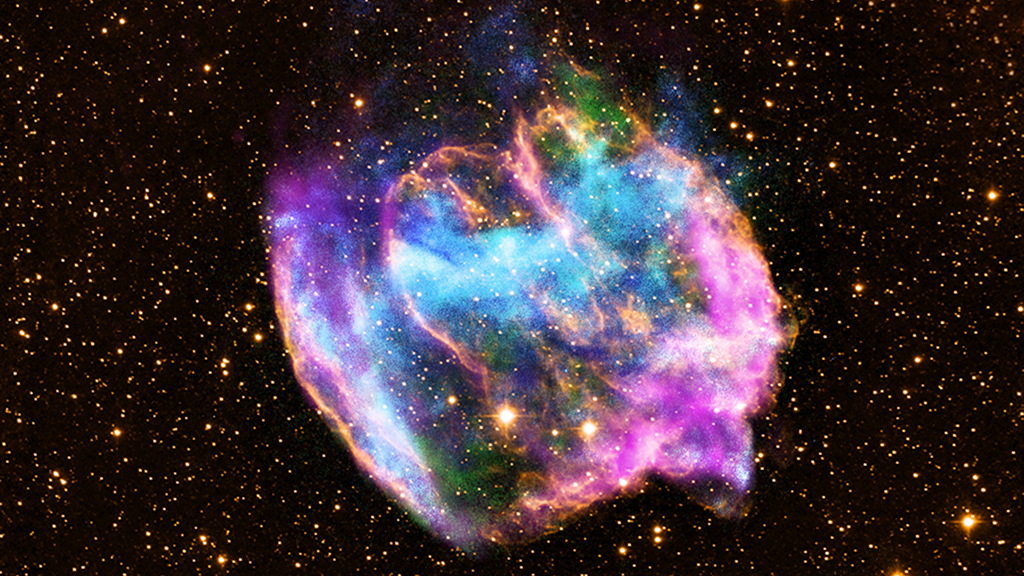Universe
ID: 11191

Supernova remnant W49B is not your run-of-the-mill remains of an exploded star. In most cases when a star explodes, its cosmic guts scatter equally in all directions, forming a ring of material around the blast site. But W49B looks different. By combining X-ray images from NASA's Chandra X-ray Observatory, radio data from NSF's Very Large Array, and infrared images from Caltech's Palomar Observatory, scientists were able to create a detailed picture of the supernova remnant. By examining the image they found that not only did an unusual explosion produce W49B, giving it a barrel-shaped appearance, but it also lacked a neutron star at its center—a common feature of supernova remnants. Scientists think in place of the neutron star there may lie a black hole. If this is true, it means that W49B could harbor the youngest black hole ever detected in the Milky Way galaxy. Watch the video to learn more about this discovery.



A New Black Hole?




Related Story
For More Information
Story Credits
Please give credit for this item to:
NASA's Goddard Space Flight Center
Cover image courtesy of NASA/CXC/MIT/L.Lopez et al.; Palomar Observatory/Caltech; NSF/NRAO/VLA
Video courtesy of NASA/CXC/A. Hobart
Radio image courtesy of NSF/NRAO/VLA
Infrared image courtesy of Palomar Observatory/Caltech
X-ray images courtesy of NASA/CXC/MIT/L.Lopez et al.
NASA's Goddard Space Flight Center
Cover image courtesy of NASA/CXC/MIT/L.Lopez et al.; Palomar Observatory/Caltech; NSF/NRAO/VLA
Video courtesy of NASA/CXC/A. Hobart
Radio image courtesy of NSF/NRAO/VLA
Infrared image courtesy of Palomar Observatory/Caltech
X-ray images courtesy of NASA/CXC/MIT/L.Lopez et al.
Short URL to share this page:
https://svs.gsfc.nasa.gov/11191
Keywords:
SVS >> App
NASA Science >> Universe
https://svs.gsfc.nasa.gov/11191
Keywords:
SVS >> App
NASA Science >> Universe








